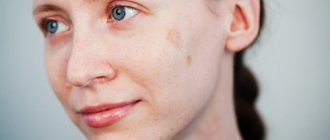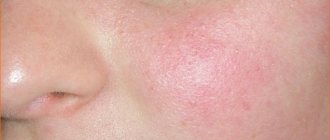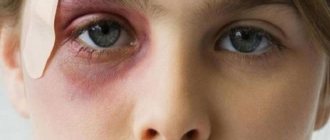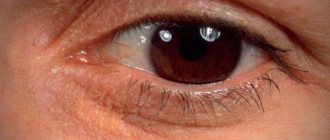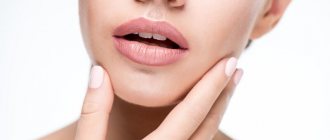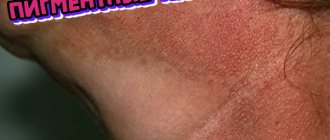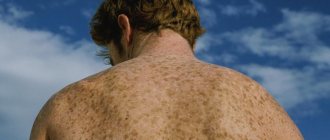Dry spots on the skin are quite common these days; they are diagnosed not only in adults, but also in children. There are a considerable number of provoking factors that can lead to the formation of this pathological condition. To carry out adequate treatment, the doctor must conduct a series of examinations and establish them. Changes in the condition of the epidermis may be evidence of severe dysfunction of internal organs. With the fact that these are dry spots on the skin, what are the reasons for their formation and treatment options, we will try to understand in this article.
Types of stains
When dry patches on the skin flake, they can come in a variety of colors. In addition, they vary in size, location, shape and accompanying symptoms. Dry patches can be white, pink, red, dark brown, or almost black. In structure they can be:
- rough and smooth, not flaky;
- dry - spots on the skin peel off,
- be accompanied by itching of varying severity;
- in the form of a rash with pustules.
A smooth surface only indicates a change in skin tone, while its structure is not disturbed. Spots that peel and itch appear more often spontaneously and do not particularly bother their owner.
Many people consider it just a mild allergy to something or a random skin irritation, but do not consult a doctor. But the anomaly may not disappear; moreover, it begins to spread to healthy areas of the skin, so examination by a doctor is a necessity.
Why do spots appear on the skin?
A variety of spots may appear on the body and they will indicate any disturbances in the functioning of the body. The reasons for their appearance can be a variety of factors - both external and internal. If the problem arose due to external influences on the skin, then it is much easier to solve - often the use of medications is not even required. In case of internal problems, full-fledged therapy will be needed.
Doctors can guess the cause of spots on the skin based on their appearance and type.
Brown
The appearance of such spots on the skin is usually associated with exposure to sunlight, which indicates an excessively large amount of melanin in the cells of the dermis. There is nothing dangerous, but it is worth taking certain cosmetic measures to get rid of the problem. Quite quickly, brown spots that appear after prolonged exposure to the sun disappear after deep cleansing of the epidermis - peeling and the use of specific bleaching agents.
Brown spots can appear on the skin of an elderly person even if direct and prolonged exposure to sunlight is avoided. And in this case we are talking about pigmentation associated with age-related changes in the body. They can be removed using lightening creams, masks and lotions.
If the spots are too dark in color, almost black, then the doctor may suspect the progression of cancer, diabetes mellitus or polycystic ovary syndrome. It will not be possible to get rid of such a cosmetic defect until full treatment has been completed or long-term remission has been achieved.
We recommend reading about how to care for your skin after sunbathing. From this article you will learn how to prepare soothing, moisturizing and redness-relieving facial masks after sunbathing. And here you can find out more about the causes and treatment of demodicosis.
Light pink, round
Most often, pink and round spots on the skin are a sign of developing atopic dermatitis. This is the medical name for an allergic reaction of the body to any irritant, which can be house dust, animal hair, pollen, or food.
Light spots on the skin with a pink tint appear against the background of severe psycho-emotional stress - for example, if a person was very nervous, or experienced some kind of tragedy, or experienced powerful positive emotions. And in this case, the localization of problem areas falls on the face, neck, chest and arms.
If light spots appear on the sides, thighs or back, then you can suspect pityriasis rosea - a disease that is activated against a background of severely reduced immunity, for example, after suffering a severe infectious pathology.
Rash associated with pityriasis rosea
Pink round spots are also characteristic of ringworm, but it is characterized by localization on the scalp and development in childhood. Extremely rarely, this disease manifests itself as pink and round spots on the neck and face.
Flaky
Such spots may be white, pink and indicate that there has been recent contact in this area with chemicals, metal, animal hair, or prolonged use of medications. And this is the simplest reason for their appearance - it is enough to eliminate the irritating factor and treat the affected area with a moisturizing, anti-inflammatory cream. But often peeling of the surface of spots can be a sign of:
- diabetes mellitus or other diseases of the endocrine system;
- fungal infection;
- pathologies of the gastrointestinal tract;
- severe stress;
- lack of vitamins in the body.
Psoriasis
In most cases, only a doctor can find out the cause of the appearance of flaky spots after a full examination of the person.
With rim
Pink spots with a pronounced red rim may indicate the following health problems:
- Progression of fungal diseases of erythrasma and epidermophytosis. Most often they affect people who have increased secretion from the sweat glands (hyperhidrosis). The spots are localized in the armpit or groin area, on the chest and near the navel.
- Development of the infectious disease microsporia. In this case, the spots are located on the scalp, stomach and upper/lower limbs.
- There is a progression of herpetic infection, tick-borne borreliosis, and lichen planus. The color of the rim can be different - from whitish to bright red, crimson.
Lichen planus
With this type of spots, it is imperative to undergo a full examination, because they may indicate not only the above diseases, but also the hidden course of multiple sclerosis and diabetes mellitus.
Dry
Excessive dryness of the skin with a clear localization of the problem is never associated with pathological changes in the body. Most often, dry spots appear due to a lack of vitamins in the body, prolonged exposure to the sun, as an allergic reaction or “response” of the skin to the wind, or low air temperatures.
The only thing doctors recommend paying attention to when light, dry spots appear regularly is the health of the gastrointestinal tract. Such a symptom may indicate constipation, inflammation of the gastric mucosa, insufficient bile production and other disorders.
White
Absolutely white spots on the skin without clear boundaries are vitiligo: a dermatological disease that is autoimmune in nature and can appear at any age. With this pathology, the skin is not changed to the touch - there is no localized increase in temperature, crusts or rashes.
If the white spots have a rough surface (flaking), then most likely a diagnosis of pityriasis versicolor (another name is sun fungus) will be made. This disease will be characterized by peeling white spots and mild itching, which intensifies with active sweating. It is noteworthy that on dark skin, pityriasis versicolor appears as white spots, but on light skin they have a slight yellowish tint.
Pityriasis versicolor
After sunbathing
A tan is always a burn to the skin, and if the sunbathing procedure is carried out incorrectly, then the appearance of spots on the skin is inevitable. They can be light, red or dark, and the reasons for their appearance are the powerful effect of high temperatures on the dermis and the lack or excess of melanin in the skin cells.
Spots after tanning can also appear when visiting a solarium, but this is only possible if the procedure is carried out incorrectly - for example, if a person does not turn around while “treating” his body with ultraviolet rays.
Watch this video about the causes of white spots on the skin:
Causes
If dry patches on the skin are flaky and cause a lot of trouble, they can appear for a number of reasons and factors:
- Allergic reactions are one of the most common causes. In this case, allergies can be seasonal or permanent. It is dangerous due to the development of complications, for example, Quincke's edema.
- Fungal infections are accompanied by itching and peeling. If left untreated, they become easily chronic and significantly reduce the quality of life.
- Severe and frequent stress is the cause of dry spots on the skin (flaky and itchy).
- Increased or sharply decreased air humidity always negatively affects the epidermis.
- Temperature changes affecting the face.
- Skin diseases.
- Problems with the thyroid gland (underfunction) and other endocrinopathies, such as diabetes.
- Gastrointestinal diseases.
- Vitamin deficiencies.
- Dehydration.
- Autoimmune diseases.
- Aggressive care products.
- Prolonged insolation, dehydration;
- Helminthiases, which are products of the decay and vital activity of worms that poison the body.
- Natural aging.
- When dry patches on the skin peel, this may be a manifestation of cancer.
- The result of living in an area with a constant sharp wind (sultry or icy). In both cases, the basis for the appearance of spots is the advancing drying of the skin.
- Sitting at a computer for a long time can also lead to dry skin on your face and hands. It is caused by prolonged vasospasm and small but long-lasting radiation directed at the present areas of the body.
- Reflex disorders of blood and lymph circulation.
Thus, if dry spots on the skin are flaky, the reasons for their appearance can be very different - from completely harmless to serious systemic diseases. 30% of all cases are neurological in nature - psycho-emotional outbursts and stress. Such spots appear on their own and disappear on their own (within a few hours, sometimes days). May be accompanied by slight itching.
Autoimmune pathologies
These diseases cannot be cured, but if you follow all the doctor’s recommendations, you can live with them. In autoimmune diseases, the immune system does not recognize its own agents and attacks cells.
Psoriasis
This is a non-infectious disease that affects the skin. Psoriasis is not contagious and cannot be cured, but it can go into remission for a long time. Papules appear on the dermis and merge into plaques.
If you remove the thick crust, a silvery film will form underneath. When the film is removed, droplets of blood appear. Without treatment, psoriatic plaques occupy 50-60% of the entire body.
lupus erythematosus
This is a chronic pathology that affects blood vessels and connective tissue. The causes of lupus erythematosus are not precisely known. It is believed that it is associated with hormonal fluctuations in the body and high levels of estrogen. Most often the disease is diagnosed in young women.
A pink, butterfly-shaped rash appears on the face (cheeks and nose). Foci of infection form on the arms and torso. Additionally, patients complain of weakness, changes in body temperature, headache and muscle pain. Lupus erythematosus is a serious disease and should only be treated by a rheumatologist.
You can see what spots with a rim look like in the photo with explanations on medical websites and specialized resources. But it is forbidden to diagnose yourself based on photographs.
Red dry spots
If a dry red spot on the skin peels off, this may indicate violent processes that require a significant flow of blood, which would supply the area with nutrition and protection and quickly remove tissue breakdown products. The appearance of such spots is typical for the following types of skin lesions:
- viral;
- bacterial;
- mycotic (fungal);
- cutaneous;
- neurological
Or spots can be the result of allergies, systemic diseases and oncology.
Possible diseases include:
- psoriasis, lichen, diathesis;
- viral infections;
- vitamin deficiency, dehydration;
- stress, prolonged emotional instability.
Viral etiology – measles, rubella, chickenpox, smallpox.
Bacterial rashes are characterized by the following - dry red spots on the skin that peel and fester - this is their distinctive feature.
Spots in skin diseases are distinguished by the fact that on the skin, along with already stabilized dry areas, areas of maceration, blisters and pustules, crusts, and scarring areas coexist in parallel.
Dark rashes
These include brown spots on the skin. Often they are the result of age-related changes (aging - actinic keratosis). Characteristic during pregnancy - they arise due to hormonal surges and changes in the body. After childbirth they disappear on their own.
Age spots on the skin (raised above the surface, varying in color - from light brown to dark) have a cracked surface with hair growing through. The reasons are disturbances in the trophism of the skin, blood supply and lymph, and those that have already surpassed all boundaries. Common causes of brown spots include the following:
- Lichen. They appear as dry spots on the skin (flaky and itchy).
- Adverse effects of ultraviolet radiation.
- Fungal infection.
White spots
White pigmentation indicates a disruption in the production of melanin, which is responsible for skin color. If a dry white spot on the skin is flaky but not itchy, there is often no need to worry. It is only the body’s response to strong external stimuli, for example, the sun. A person may also have increased destruction of melanin, for example, with vitiligo, one of the lichens (pink, or Zhibera, pityriasis versicolor, also called colored, sunny, beach), one of the forms of leucoderma (syphilitic, medicinal or other).
Treatment with cosmetic procedures
Laser therapy is indicated for dark, dry spots on the skin caused by the accumulation of melanin. When exposed to laser, melanin is destroyed, but healthy skin cells are not affected.
Chemical peeling is a procedure that involves applying lactic, fruit, and glycolic acid to the skin. The principle of operation is that the top layer of skin is burned with acid and after a few days peels off, revealing healthy skin.
Phototherapy – light rays are applied to the skin. The technique is effective for vitiligo, psoriasis, eczema, and fungus.
Diseases with spots
Psoriasis is a dermatosis of a chronic relapsing nature that has not been studied in etiology. Can occur at any age. It is of hereditary nature. Red spots with peeling, round in shape and small in size appear on the skin of the elbows, under the knees, on the back, under the hair of the head.
It is assumed that psoriasis is the result of autoimmune disorders in the body. Its relapses are easily provoked by stress and chronic infections. The main symptom is dry patches on the skin (flaky and itchy), resembling silvery flaky scales. They tend to merge. The initial stage is plaques 1-2 cm in size with a rough surface. Itching and soreness appear later.
Psoriasis is incurable. Modern drugs can only contain the manifestations of the disease and prolong remission. We can talk about psoriasis when dry spots appear on the skin (flaky and itchy).
Tinea versicolor
Ringworm is characterized by the appearance of dry, scaly patches on the skin. Its cause is a fungus that is very difficult to treat. Ringworms often become chronic and last for years, despite treatment.
Lichen versicolor produces rashes in the form of brown spots of irregular shape; they do not rise above the level of the skin. Less commonly, the spots may be flesh-colored or pink.
The disease causes aesthetic discomfort and is most often located on the chest, neck, back, shoulders, and abdomen. The skin peels off when scratched, the plaques are small in size (about 2 cm in diameter).
The rashes tend to merge. As the disease progresses, the rash usually moves to the groin area. Relapses are triggered by a decrease in immunity, for example, during pregnancy, insolation, after a viral infection, hypothermia, etc.
Ringworm
Often, the appearance of spots on the body is associated with mycosis or fungal infections, or simply a fungus in the groin area in men. Ringworms form on the skin - red or pink spots. Dermatologists distinguish different types of lichen; they differ in appearance, pathogens, treatment rules and other characteristics.
Some lichens are contagious; if you come into contact with a sick person, there is a high risk of becoming infected (such formations most often appear in children, because it is difficult to ensure that all hygiene rules are followed). There are other types of lichens that are not contagious.
girdling
At the initial stage of the disease, a person feels lethargic, headache and chills are possible. Sometimes the patient feels discomfort in the place where the rash will appear in the future. The causative agent is the herpes virus.
2-4 days after the deterioration of health, the patient notices that pink spots have appeared on the body. Small bubbles filled with liquid appear on the formations. Ringworm is very itchy and painful, located on the body, along the nerves (extremely rarely appears on the face, arms or legs).
Gradually, the bubbles become large and the liquid becomes cloudy. Then they retract and the stain becomes crusty.
Shingles is sometimes accompanied by fever (up to 39 degrees).
Pink
The pathology is also called Zhiber's lichen. This is a chronic dermatological disease that occurs in people in the age group from 20 to 40 years.
Initially, a maternal plaque is formed, this is a round spot on the skin with a red rim. It appears on the torso, neck, back or chest. After a few days, small daughter spots form throughout the body. They are small in size, slightly flaky with pronounced boundaries.
Red flat
This type of lichen can be located in different parts of the body. Most often it forms under the armpit, in the groin, on the elbows or behind the knees. Sometimes it affects nails and mucous membranes. Women between 40 and 50 years old are especially susceptible to it.
Nodules form on the body, merging into shiny plaques. The shade varies from brown to red or bluish. The formation itches and causes discomfort. The illness lasts for 4 weeks.
Shearer
The disease usually affects the scalp (less commonly, nails and skin). A spot with a rim forms under the hair, affected by fungi (they are transmitted from pets or infected people).
The hair above the spot falls out. Subsequently, they grow, but when they reach 3-4 centimeters, they break off. Ringworm can be single or multiple, the disease is contagious, so quarantine must be observed until recovery.
Eczema
A frequently occurring pathology, acute or chronic, non-contagious. Etiology: neuro-allergic. Usually it is a consequence of allergic reactions with subsequent inflammation, various rashes, itching and relapses.
The initial stage of eczema is characterized by dry spots, later they are replaced by other forms - vesicles, blisters, weeping, crusts and scales. In all forms there is severe itching of the skin. Eczema always becomes chronic.
Alarming symptoms
Urgent consultation with a doctor is required in the following cases:
- a flaky spot on the skin begins to rapidly grow in size;
- the skin first itches and then peels off;
- periodically the spots disappear and reappear in the same places;
- peeling lasts more than a month;
- spots appear on those who have been in contact with their owner;
- the skin cracks and weeping wounds appear on it;
- pain and bleeding in the area of the rash;
- ulceration of spots, addition of maceration.
Elderly people need to be especially vigilant, since senile skin is most susceptible to degeneration.
Diagnostic measures
For diagnosis the following is carried out:
- laboratory examinations:
- examination by a dermatologist;
- blood biochemistry and its general analysis;
- checking for allergic reactions;
- urine and stool analysis;
- laboratory examination of skin scrapings and smears;
- sowing on flora.
If dry spots on the skin are flaky, the diagnosis also includes dermatoscopy - assessment of the rashes with a special device - a dermatoscope. The device consists of a magnifying glass of enormous magnification.
To analyze scrapings, skin particles are examined under a microscope to identify parasites. A blood test will reveal the presence of inflammation in the body.
What to do
Doctors prohibit self-medication. If a stain is detected, it is necessary to scrape it and take blood and urine tests. After receiving the results, the doctor will make a diagnosis.
Treatment depends on the type of pathology and what microorganisms it is caused by.
- Fungal formations are treated with antimycotic drugs. The spots are smeared with anti-fungal creams, and sometimes antifungal tablets are prescribed.
- If the disease is caused by bacteria, then antibiotics will help. In cases where the causative agents are viruses, antiviral drugs are prescribed.
- If the defects are caused by allergies, it is necessary to stop or limit contact with the irritant and take antihistamines.
- For autoimmune pathologies, comprehensive treatment should be followed.
Treatment of spots
If dry patches on the skin are flaky, treatment depends on the cause of their appearance.
Pityriasis versicolor is treated, for example, with Clotrimazole, wiping the lesions with boric alcohol, shampoos (Nizoral, Dermazol, Sebozol), and Fluconazole in capsules for internal use.
Also, for tinea versicolor, the doctor may prescribe ultraviolet irradiation for a course of 5-7 sessions. This helps well with residual pigmentation on the affected areas of the skin.
Baths based on Dead Sea salts and treatment at seaside resorts (especially during periods of exacerbation) have an excellent effect on psoriasis and eczema.
If the spots are of an allergic nature, antihistamines are indicated - local and general. They are needed to desensitize the body. Most often these are “Claritin” or “Diazolin”, “Suprastin”, “Erius”, “Zodak”, etc. Local treatment with ointments (“Fenistil”, “Gistan”) is also indicated, which must be applied to the affected areas of the skin for 10 days.
If we are talking only about dry skin, keratosis can be softened and soaked in creams and ointments with a stimulating regenerative effect, such as Bepanten, Elidel, Panthenol. They perfectly moisturize the skin, prevent cracks and restore the epidermis.
The skin is very well moisturized when using creams with urea. For severe skin forms of eczema, hormonal ointments from a series of glucocorticosteroids are used - prednisolone and hydrocortisone ointment, Sinaflan, Fluorocort, etc.
Fungal diseases are treated with antimycotics orally and topically - Clotrimazole, Fundizol, Exoderil, Terbizil, etc.
What are the spots?
They differ in color and size. They can be pink, red and even dark burgundy. Some formations are small in diameter (up to one centimeter), others are large (over 10 centimeters). Defects can be convex or flat.
All spots are conventionally divided into the following types:
- Telangiectatic - formations arise as a result of strong emotions (shame, anger).
- Hyperemic - skin defects that appear due to dilation of blood vessels. Usually have an inflammatory nature.
- Hemorrhagic - spots caused by hemorrhage in the skin. For example, after a strong blow or injury.
Attention! A white spot indicates a lack of melanin in a certain area of the dermis. If it is surrounded by a red rim, then we are talking about inflammatory processes in the body.
Prevention
Prevention consists of eliminating provoking factors and events. Patients with dermatological problems should:
- Healthy food;
- avoid stress;
- pay attention to adequate sleep;
- avoid contact with allergens;
- work with household chemicals only using protective equipment in the form of a mask, goggles and gloves;
- in summer, avoid direct sunlight on the décolleté, neck, and face;
- Wear wide-brimmed hats and sunscreen.
Diseases of internal organs should be treated promptly. For problems with the gastrointestinal tract, it is useful to carry out a course of cleansing and detox therapy, review your diet and balance it. For helminthiasis, it is necessary to carry out active anthelmintic therapy.
You should stop smoking - nicotine and its tars actively dry the skin. We should not forget about maintaining immunity at the proper level. Additionally, you must take immunomodulators, vitamins and minerals prescribed by your doctor.
